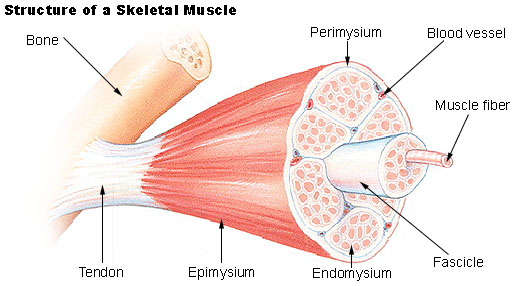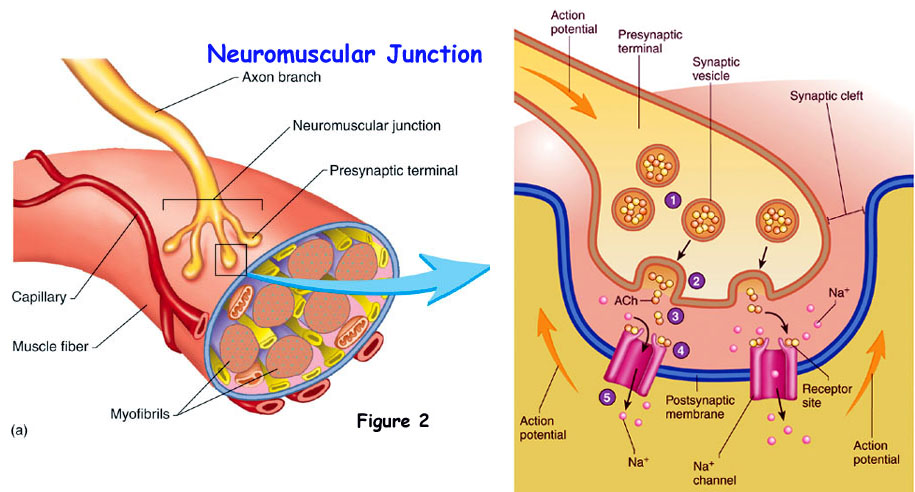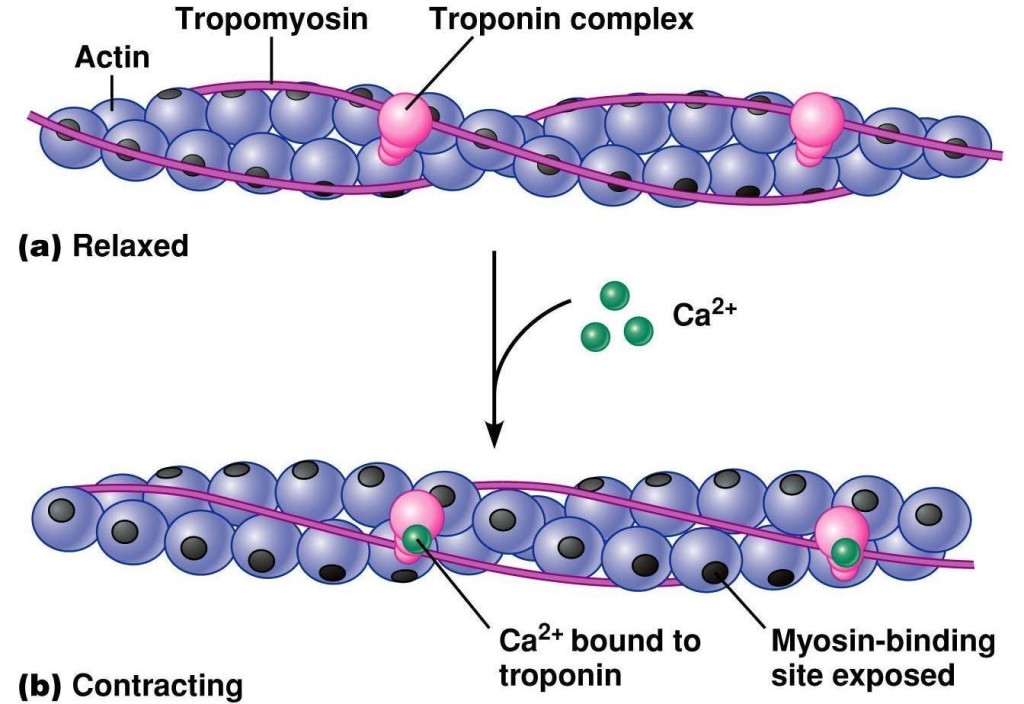2016.06.17 CSCS Daily Study Question:

Upon microscopic inspection of a muscle cell, you see that the calcium concentration of the sarcoplasm is high and the calcium concentration of the sarcoplasmic reticulum is low. Given these observations, which of the following statements is most accurate?
(A) The A-band of the muscle cell sarcomere has shortened
(B) Acetylcholine is likely present in the adjacent neuromuscular junction
(C) Calcium is currently bound to tropomyosin
(D) Tension within the muscle cell is low
Continue Reading / scroll down for answer…..
Try Another CSCS Question of the Day
Correct Answer:
(B) Acetylcholine is likely present in the adjacent neuromuscular junction
Explanation:
When calcium concentration in the sarcoplasm is high and the calcium concentration in the sarcoplasmic reticulum is low, you can assume that the muscle is in its active state, and therefore generating tension (choice D is wrong). The initial stages of muscle cell activation involve the arrival of the neurotransmitter acetylcholine. Acetylcholine is released into the neuromuscular junction from the motor neuron. As for the other incorrect answers, the A-band of the sarcomere corresponds with the length of myosin (thick) filaments and does not change in size (choice A is wrong). Also when muscle cells are activated, calcium binds to troponin, not tropomyosin (choice C is wrong).



Reference:
Essentials of Strength Training & Conditioning 3rd edition p. 5 – 9

These CSCS exam practice questions were created to help users study for the Certified Strength and Conditioning Specialist certification exam from the National Strength and Conditioning Association (NSCA). Using CSCS exam practice questions is an efficient way to study the most relevant material for the Certified Strength and Conditioning Specialist exam. CSCS exam practice questions can help you to remember important concepts and test your knowledge of the material in a no-pressure environment. The Certified Strength and Conditioning Specialist designates that a fitness professional has the scientific and practical knowledge necessary to assist athletes to improve their physical performance.
If you’re like most strength and conditioning specialists, chances are that you like sports and you have a competitive mindset. For people who are competitive, doing practice questions is awesome because 1) they like to win, and 2) the sting of getting a question wrong burns the correct answer into the mind of a competitive person unlike any other learning method.
The Certified Strength and Conditioning Specialist (CSCS) exam by the National Strength and Conditioning Association (NSCA) is a four-hour-long, pencil and paper or computer-based examination. The Certified Strength and Conditioning Specialist exam has two sections: “Scientific Foundations” and “Practical / Applied.” Each of these sections consist of questions that the National Strength and Conditioning Association (NSCA) feels are relevant to test the knowledge and experience of a candidate for the Certified Strength and Conditioning Specialist (CSCS) professional credential. Certified strength conditioning specialist comprehensive questions from the Scientific Foundations section include anatomy, exercise physiology, biomechanics, and nutrition. certified strength conditioning specialist comprehensive questions from the Practical / Applied section include program design, exercise techniques, testing and evaluation, and organization / administration (NSCA, 2015).
2016.06.17 CSCS Daily Study Question